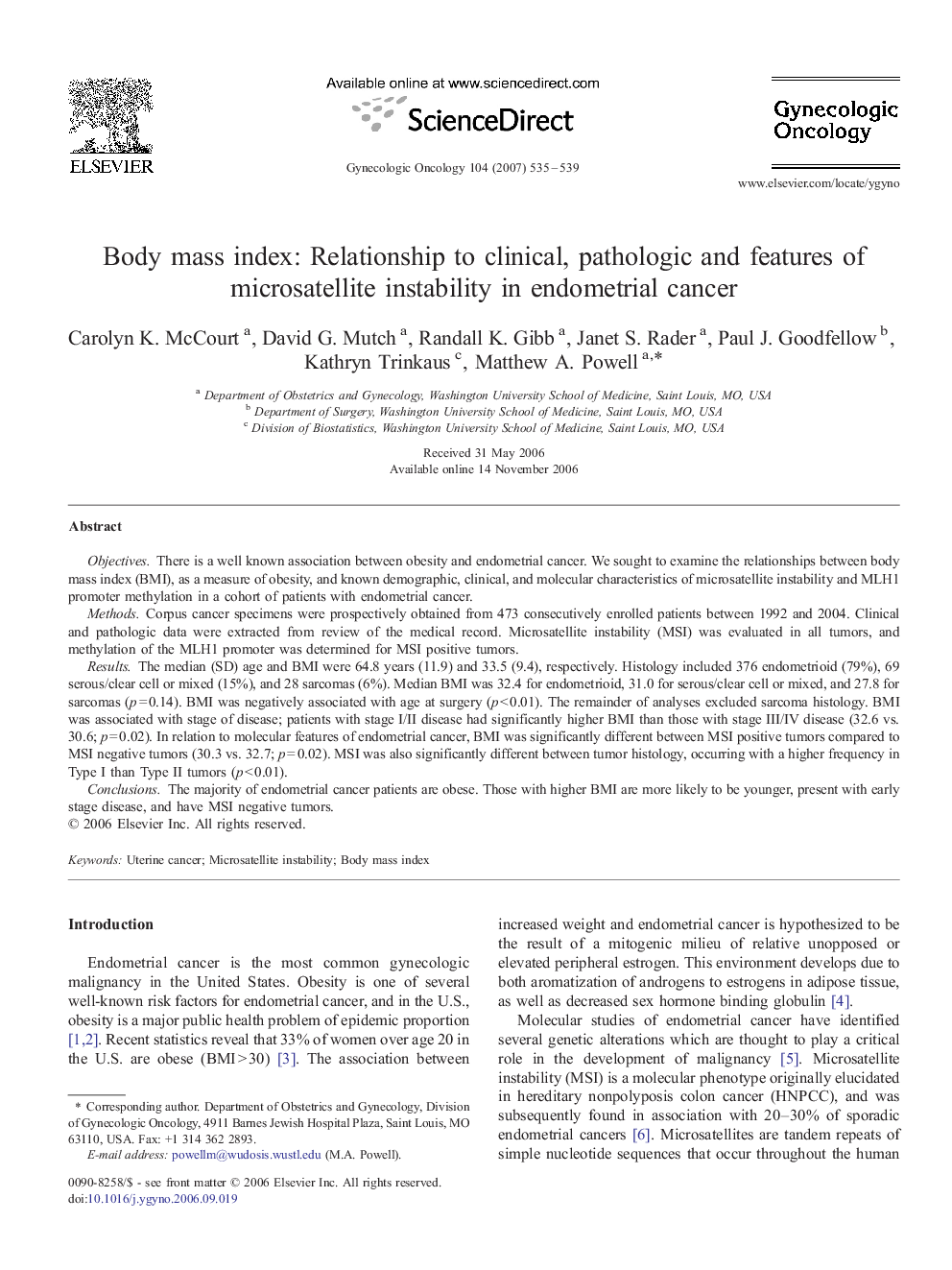| Article ID | Journal | Published Year | Pages | File Type |
|---|---|---|---|---|
| 3943486 | Gynecologic Oncology | 2007 | 5 Pages |
Objectives.There is a well known association between obesity and endometrial cancer. We sought to examine the relationships between body mass index (BMI), as a measure of obesity, and known demographic, clinical, and molecular characteristics of microsatellite instability and MLH1 promoter methylation in a cohort of patients with endometrial cancer.Methods.Corpus cancer specimens were prospectively obtained from 473 consecutively enrolled patients between 1992 and 2004. Clinical and pathologic data were extracted from review of the medical record. Microsatellite instability (MSI) was evaluated in all tumors, and methylation of the MLH1 promoter was determined for MSI positive tumors.Results.The median (SD) age and BMI were 64.8 years (11.9) and 33.5 (9.4), respectively. Histology included 376 endometrioid (79%), 69 serous/clear cell or mixed (15%), and 28 sarcomas (6%). Median BMI was 32.4 for endometrioid, 31.0 for serous/clear cell or mixed, and 27.8 for sarcomas (p = 0.14). BMI was negatively associated with age at surgery (p < 0.01). The remainder of analyses excluded sarcoma histology. BMI was associated with stage of disease; patients with stage I/II disease had significantly higher BMI than those with stage III/IV disease (32.6 vs. 30.6; p = 0.02). In relation to molecular features of endometrial cancer, BMI was significantly different between MSI positive tumors compared to MSI negative tumors (30.3 vs. 32.7; p = 0.02). MSI was also significantly different between tumor histology, occurring with a higher frequency in Type I than Type II tumors (p < 0.01).Conclusions.The majority of endometrial cancer patients are obese. Those with higher BMI are more likely to be younger, present with early stage disease, and have MSI negative tumors.
